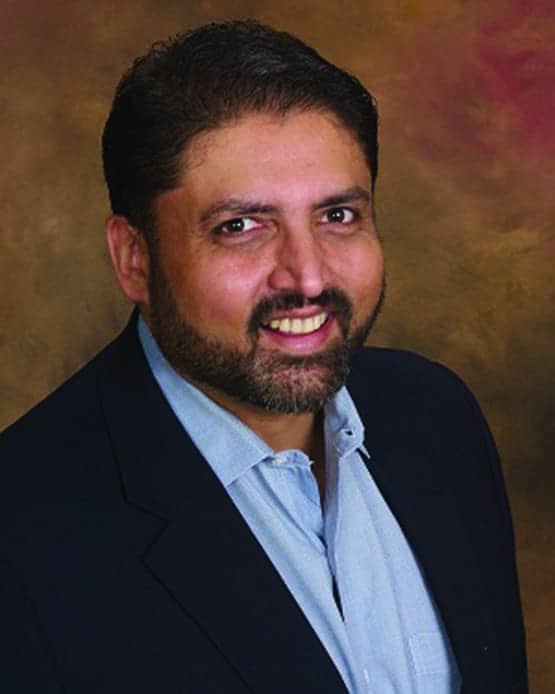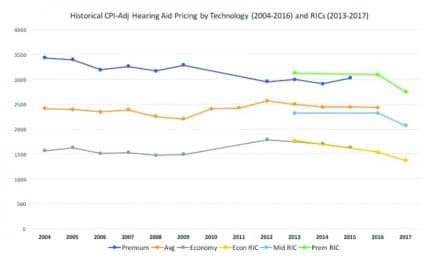The World Health Organization (WHO) recently published a comprehensive document titled World Report on Hearing complete with a multi-faceted H.E.A.R.I.N.G. package. The “A” in the acronym stands for access and it’s a key concept that focuses squarely on another A-word—affordability.
Amyn M. Amlani, PhD, a noted audiology researcher and former director of Professional Development and Education at Audigy, Vancouver, Wash, has seen the challenges of access. Now owner of the Texas-based Otolithic consulting firm, Dr Amlani has made it his business to ponder these themes. Hearing Review sat down with him to get his opinions about the WHO report, as well as to gauge his opinions on matters such as Medicare and financing options.
Hearing Review: If you could magically have hearing aids covered by Medicare, would you do it?
Amlani: If we look at Medicare in the main scheme of hearing loss prevalence and the WHO health report that just came out, the Medicare process is a barrier to those who need the intervention component of the services we provide. If I could wave a magic wand and get rid of some of the barriers, I absolutely would because it would allow us to treat more people. That’s the whole premise behind the WHO’s document. More and more people are entering the market, and we are not keeping pace with those who require our services.
Hearing Review: Why are hearing aids not covered?
Amlani: If you look at our field historically, the profession of audiology has been categorized by Medicare as a diagnostic profession. We determine whether or not someone has a hearing loss. Medicare does not view us as being rehabilitationists or interventionists.
HR: What can and should be done to change this perception?
Amlani: There’s a bill called a Medicare Audiologist Access and Service Act (MAASA). It was reintroduced to Congress on World Hearing Day, which is the day the WHO informed us of its document. It’s a bipartisan bill being sponsored by about 20-or-so members of Congress. It does not expand our scope of practice, but it does two things. First, it allows audiologists to also have the designation of being interventionists, in addition to the diagnostic piece. Second, it also eliminates the need for a physician referral. Patients could come directly to us without having to see a physician first who is going to refer them to us anyway—so it reduces taxpayer costs.
Related Article: OTC, Hearing Aids, and Cost as a Barrier to Purchase: An Interview with Amyn M. Amlani, PhD
HR: What benefits would be realized by greater access to hearing care?
Amlani: I just completed the certificate in health economics and outcomes research. At the forefront for me is getting a better understanding of how audiology fits into the greater landscape of healthcare. Over the years, the profession has its evidence primarily in the outcome-based category. We put hearing aids on somebody and found that audibility and functionality is improved with them rather than without them. But we have failed on the side of the impact. What is it that we do that has a greater impact on quality of life?
By having more opportunities to fit individuals with comorbidities—by having an earlier intervention—we now allow for these individuals to have a better and improved quality of life. There is less depression, obesity, and social isolation. Patients become contributors to society, which hopefully then will counteract some of these comorbidities.
HR: How can audiologists tactfully talk about price?
Amlani: We need talk about value rather than price. I had knee surgery last fall, and the discussion wasn’t if I do this or that procedure and/or the costs. It was, “What do you want? How do we improve your quality of life?” The main question becomes: Is the surgeon able to go in and fix the issue, and can I improve my abilities to be functional with therapy?
Audiologists need to move to that model. From there, the discussion becomes less focused on price, and more about the quality that can be delivered by the audiologist.
HR: What is your opinion of financing options?
Amlani: Any time you can offer alternative payment options, it adds value to your clinic. Not everybody has the immediate finances to take care of themselves. If we can offer folks different mechanisms in which to improve their quality of life, financing being one of these mechanisms, by all means I think it should be available—if not in all clinics, then the majority of clinics. It gives patrons another option to improve their health care journey.
About the author: Greg Thompson is a freelance writer and a former editor of Physical Therapy Products and other publications. He is based in Loveland, Colo.
Image: © Leowolfert | Dreamstime.com






